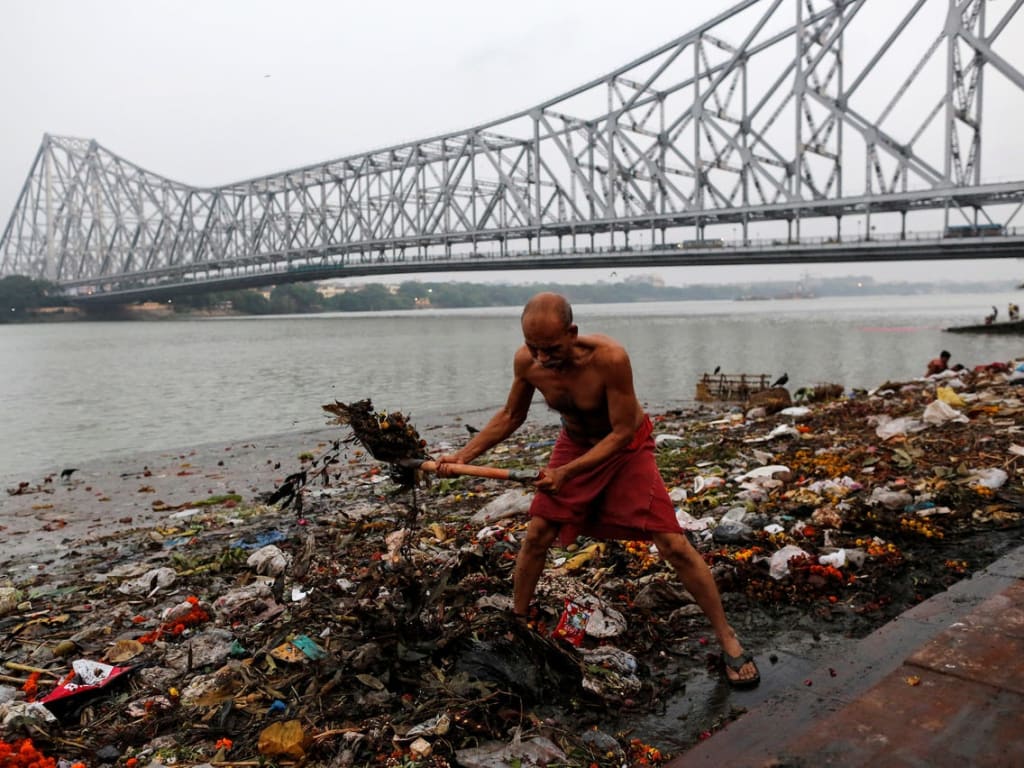Causes of river pollution
threat of environmental pollution

Causes of river pollution
Pollution is a manifestation of the origins of humanity that systematically affects rivers and their associated ecosystems. Therefore, the causes of pollution of these important bodies of water should be explained from the point of view of ecosystem.
Structurally, the causes stem from global patterns of water use, management, and waste, associated with unsustainable ways of life that prioritize immediate economic change over environmental and social change.
For example, it is estimated that one kilogram of paper requires about 250 liters of water. In agriculture, 1,500 and 800 liters are required to produce 1 kg of wheat or sugar respectively. In metallurgy, 100,000 liters are required to produce 1 kg of aluminum. Can nature meet these demands?
In general, the causes of pollution of rivers and other ecosystems can be summed up in:
Directly, such as elements, activities and factors that directly affect water.
Indirectly, it is made up of a set of factors that enable, support and enhance the effect of direct causes.
Direct causes include the threat of environmental pollution, weakness in legislation and its implementation on various scales, lack of ethics, and lack of awareness and education about social inequality.
Agricultural activities and livestock
Modern agriculture uses a large number of chemicals, such as biosides, to control pests and diseases or to fertilize.
These chemicals are applied directly to the soil or to crop plants, washed with large amounts of irrigation water or rain. Depending on the type of soil, geology and water table, these pollutants often end up in rivers.
In some crops, such as cotton, large amounts of bioside are applied by air fumigation. In these cases, air can be a transport agent for these chemicals to rivers.
On the other hand, many organisms cannot be easily degraded, which is why they pollute the water for a long time and affect biodiversity.
Fertilizers affect the purity of water by adding high levels of nitrogen, phosphorus and potassium.
Detergent
Detergents are not easily biodegradable, so they are difficult to remove from the aquatic environment. In addition, they contain surfactant compounds that interfere with the solubility of oxygen in water, thus causing the death of aquatic organisms.
Agricultural and livestock products
Agricultural products that can pollute rivers include biosides (herbicides, pesticides, radiantides and mitesides) and fertilizers (organic and inorganic). The most troubling are chlorinated pesticides and nitrogen and phosphorus
Organic matter and organ microorganisms
Different types of disease-causing bacteria, protozoa and viruses reach river water. The only access is to household waste and livestock farms without sewage treatment, which are dumped directly into the riverbanks.
Accumulation of these microorganisms in water can cause diseases of varying severity.
Edit effects
Drinking water
Rivers are an important source of drinking water for both humans and wildlife. Similarly, in many cases they provide the water needed for agricultural and livestock activities.
River pollution renders water unusable for human or animal use and in extreme cases makes it equally useless for irrigation water. In addition, the presence of pathogenic microorganisms of intestinal origin is conducive to the spread of diseases.
Biodiversity
Water pollution causes the extinction of species in the ecosystem. Both aquatic and reptile species may disappear, as well as animals that eat contaminated river water.
Irrigation water
Rivers coming from unarmed urban waters or animal farms are not suitable for irrigation. The same thing happens with the mining process or the river water near the industrial zone.
If contaminated water is used for irrigation, mixtures and toxic compounds or pathogenic organisms may settle on the epidermis of plants or be absorbed by the roots. Contaminated agricultural products become a health hazard if used by humans.
Tourism
Rivers and associated ecosystems can be economically important tourist destinations for residents. Their pollution devalues them and causes economic damage.
The presence of pathogenic microorganisms or toxic waste in polluted rivers can pose a health risk. In addition, it loses its natural value, especially due to the accumulation of solid waste.





Comments
There are no comments for this story
Be the first to respond and start the conversation.